Water for Power: Irrigation Dam to be Used for Thermal Power- Drinking Water Supply of BHU, Agriculture, and Existence of Waterfalls at Risk
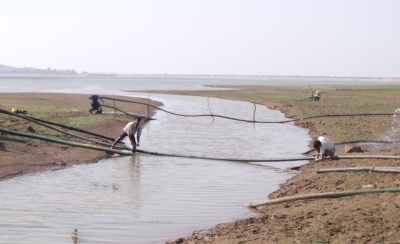
Welspun Energy which is famous for renewable sources of energy like solar and wind power plants in India, is now becoming more infamous in thermal power sectors in India. While, the Environmental Clearance of one of its thermal power plant in Katni (Madhya Pradesh) is under controversy since 2 years alleging fake public hearing and protests from farmers for forcefully acquiring land with help of local administration,… an action replay is observed in another thermal power plant proposed by the company in Mirzapur district of Uttar Pradesh. While High Court of Madhya Pradesh has issued notices to Central and State government of M.P. for Katni Thermal Power Plant raising question on the whole EIA process[i], the proposed 1320 MW Mirzapur thermal power plant is awaiting EC and is facing huge opposition from local people and Banaras Hindu University which has its new 2700 acres of south campus very near to the project site. Students of BHU even sent a written petition to MoEF alleging that public hearing was not communicated properly and the EIA concealed several critical information.In this article, we tried to highlight the issues related to water where the company has been alleged to conceal information and not taking into account the factors which will is bound to have significant impact on environment.
A 1320 MW coal based thermal power plant is proposed at village Dadri Khurd in Mirzapur by M/s Welspun Energy (U.P.) Pvt. Ltd. Issues like concealment of wildlife data and utilizing forest areas caught the eyes of environmentally concerned people after the Site Visit report prepared by Vindhya Bachao was made public. One of the key issues raised was the impact of water withdrawal and the manner in which it is proposed in the Environment Impact Assessment (EIA) report. The project proponent concealed information regarding the presence of an entire river, water-falls, a University campus of 2700 acres and the fact that the same water source provides drinking water to the entire campus!
The project was considered for Environmental Clearance by Expert Appraisal Committee (EAC) – Thermal Power and Coal Mines on 26th March, 2013 and 18th November, 2013, and was deferred both the times. Local activists and Banaras Hindu University have made representations for shifting of this project to MoEF (Ministry of Environment and Forests) already. The project is being under consideration for third time by EAC in its meeting dated 25th March, 2014. This article presents a short summary of the contradictions between the claims made by the Company and the reality at the ground level. It also illustrates the extent to which a company can go to mislead the authorities to get an Environmental Clearance.
1. No EIA of withdrawal of water from Ganga
Ecological Flow ignored while giving NOC to withdraw Ganga water
The project proponent wrote in its EIA that 40 lakh liters of water per hour will be required by the power plant which will be withdrawn from River Ganga via Upper Khajuri Reservoir. In the NOC (No Objection Certificate) letter given by CWC (Central Water Commission), the dry period of Ganga has been written as January to May. According to researchers based in Varanasi and Mirzapur, the water flow in Ganga improves only around July after the onset of monsoons. Apart from this, one can visually make out the state of river Ganga in Mirzapur which starts drying in October and by November end, the river looks completely dry. In any case, the extraction of water in lean season will not only affect the river ecology but the livelihood of people dependent on the river as well specially the fishermen. Mirzapur stretch also reportedly has Gangetic Dolphins, which will be also affected due to the proposed activity. However, it is ironical to see that the country’s premier institutions like CWC ignored the water flow of Ganga at Mirzapur while giving NOC to withdraw water. Not only the lean season has been altered for the project but the high level of pollution in Ganga has also kept aside while allowing so much water (36 MCM) to be pumped for the power plant. Mirzapur lies between Allahabad and Varanasi, both of which lie on the banks of Ganga, and are responsible for its severely polluted state. No doubt the water quality of Ganga at Mirzapur is not great and there should be enough water present in the river to allow safe dispersal of pollutants and improving the self cleansing capacity of the river. In such a crisis, the decision of the CWC to allow withdrawal of water from Ganga is extremely incongruous.
In a response to a representation that we sent to the MoEF regarding this, the company replied that they are using just 0.0003% of total 60,000 Cu.mec. water flow in the Ganges. It must be mentioned here that this calculation was based on the consideration of 4 lakh litres of water required per hour, instead of 40 lakh/hour. As discussed earlier, such huge extraction of water will have significant impact on the river flow in lean season. There has been no impact assessment of the withdrawal of water from Ganga which was required to be done as per the TOR issued to the project.
The Distance of Upper Khajuri Reservoir by road from Mirzapur is at least 24 Km and from Upper Khajuri reservoir to the proposed site is another 7 Km. The elevation of the proposed project site is at 630 feet while the elevation of Upper Khajuri dam and river Ganga is at approx. 510 feet and 260 feet respectively. The pipeline crosses through several Reserve Forests like Barkachha RF, Daanti RF, Marihaan Reserve Forest and Patehra which are home to at least six Schedule I species including Sloth Bear, Chinkara and Vultures. According to a reply under RTI application from the forest department, it is also noted that the region has a very small population of Swamp deer and Mugger Crocodile too.
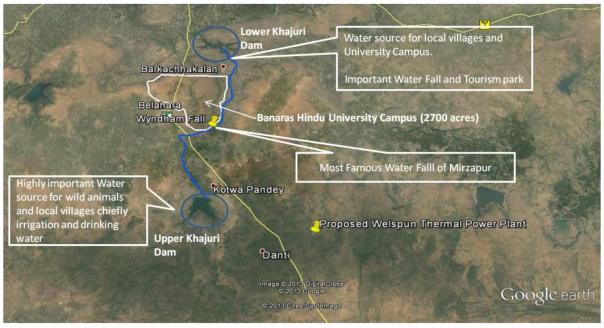
2. Diversion of Irrigation Reservoir to Industrial Use, was there any participation of the affected people in this decision?
i) Imprudent approach to use Upper Khajuri The project proponent says that the water for dry season of Ganga will be met from Upper Khajuri Dam, which will be filled up during monsoon.The company also added that 9.5 MCM will be also pumped for agricultural needs of the people. Firstly, the reservoir is very much in use and is source of irrigation and drinking water. The subsequent question that arises is whether they have the permission for additional 9.5 MCM to be withdrawn and whether there is any checking mechanism to monitor that only 36 MCM water is being pumped and no more? Will they be able to maintain the water quality, which will be effected due to ingress of Ganges water?
According to the information available on WRIS-NRSC website, the Upper Khajuri Reservoir is a very old reservoir developed in 1962 as a medium irrigation project with potential created at 7280 Ha with a live storage-capacity of 37.834 MCM.
Our concern here is, whether the idea of filling up of a rain-fed reservoir with the severely polluted water from Ganga will solve the problem or escalate it? There are several agricultural fields adjoining Upper Khajuri reservoir that will be submerged. In addition, the clean water available to the farmers will be completely jeopardised and there will be increased threat of contamination of the fields due to the constant filling of polluted water from Ganga. It is worth noting that the current source of water for the reservoir is rainfall surface run-off which gets enough time to clean its water from suspended particles and other contaminants.
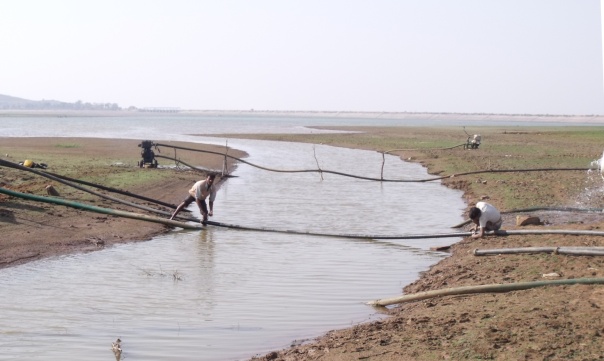
Wyndham fall is a very famous historical water fall and nature park being maintained by Forest Department, which is on River Khajuri. The length of the river between Upper and Lower Khajuri Reservoir is very short, which is approximately less than 10 Km. The LKR is the source of drinking water to the entire BHU South Campus and any alteration to Upper Khajuri Reservoir will directly affect the Lower Khajuri Reservoir as both of them are connected via River Khajuri.
The EIA report not only ignores the presence of 2700 acres of RGSC-BHU, but also does not even mention the presence of River Khajuri, Wyndham Fall and Lower Khajuri Reservoir (LKR). LKR, commissioned in 1949 as per CWC register of Large Dams in India has gross storage capacity of 120.37 MCM (Million Cubic Meters). UKR, commissioned in 1958 has gross storage capacity of 44.74 MCM and live storage capacity of 37.83 MCM. As CWC register shows, both are irrigation projects.
A representation from Banaras Hindu University has already been sent to MoEF on 18th September, 2013, in which they have mentioned that any alteration to Upper Khajuri will jeopardise the drinking water source of the campus. In the same letter it has been demanded to shift the site of the project far from the campus.
Opposition is also coming from the students of RGSC. Students recently sent a petition with more than 500 signatures showing opposition to the use of Upper Khajuri dam and saying that Khajuri River has cultural values for the students and they are sentimentally attached to the river system, especially the Wyndham fall and Kharanja fall. They also showed concern regarding water quality as it is also the source of drinking water for them. The same petition also alleged that the information about public hearing was not communicated properly, due to which no one from RGSC could participate in the Public Hearing and register their complaint.
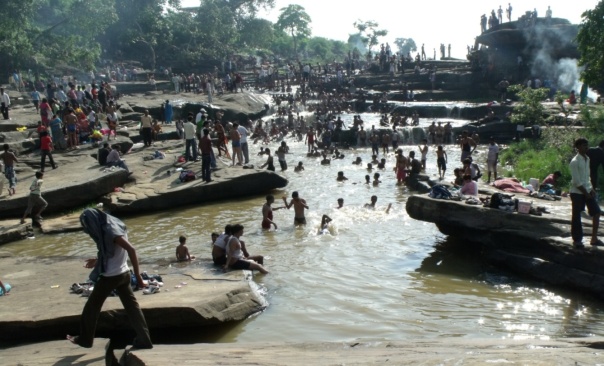
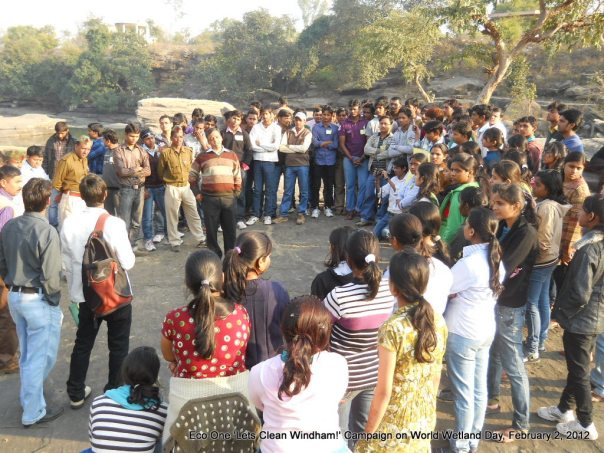
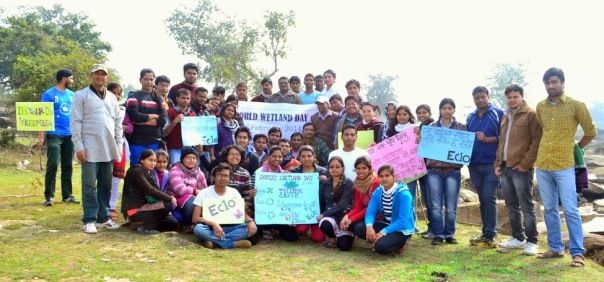
“Study on the impact on river/marine ecology (as may be applicable) due to the proposed withdrawal of water/ discharge of treated wastewater into the river/ creek/ sea etc shall be carried out and submitted alongwith the EIA Report.”
The company repeatedly maintained in the EIA report that there will be no impact on water resources due to the project.
In the EIA report they wrote that the project will be designed for zero waste water discharge and the waste water generation will be only 1% of freshwater withdrawn. This magical prediction is based on their theoretical design. However, it is highly impractical. Moreover, there is no mention of River Khajuri, Wyndham fall and most importantly, the fact that the same water source is also used for drinking water by BHU and also irrigation. Apart from withdrawal of water, what concerns us is the impact of water pollution on the water sources. In a thermal power plant project, the water pollution range from discharges from cooling tower blow down, boiler blow down, demineralisation plant effluent, coal handling plant dust suppression, ash handling, Leachate of heavy metal (especially Mercury) from ash pond, effluent from oil handling and transformer areas, power house and turbine area effluent and domestic waste water. No detailed assessment of impacts on water due to withdrawal or discharge is given in the EIA report.
Though the company’s arguments have seems to have convinced State Government and Central Water Commission, it is becoming very hard for the BHU Professors to accept that this will not jeopardize the drinking water supply of the campus. As the Upper Khajuri dam and river Khajuri is being used extensively for drinking water, this will severely affect the water quality. As the length of river Khajuri between UKR and LKR is short, one cannot expect the self cleaning capacity of the river will be too sufficient. The impact of the water withdrawal on the aquatic ecology, groundwater recharge, irrigation, water falls was also required, none has been done.
EAC in its meeting dated 26th March, 2013 raised this issue to project proponent and asked for some other alternative water source for the project site, since the dam was constructed for drinking and agricultural needs and not for industrial purposes.
In our representation to EAC we also emphasized that water from Ganga will have very very high levels of BOD, coliforms and other pollutants, which will cumulatively jeopardize the water quality in the streams leaving this entire region in severe crisis of drinking water. Apart from that, contaminants like Zinc, Aresinc, Chromium, Phosphate, Copper and radioactive element like Uranium will impose heavy threat to the water quality of the local water sources as the waste water will be finally discharged in local nallah which will drain either into Khajuri river or some other wetland. The company has still kept a mum on the disclosure of that local nallah till now, where the wastewater is to be discharged.
On raising the issue regarding water discharge and impact on water resources to EAC in November last year, the company responded as follows:
“The desired water is sourced primarily from Ganga River flowing at a distance of 17 km from project site for which desired approvals have already been obtained from State & Central Government. The same is only intermediately stored at Upper Khajuri Dam, which is finally pumped to reservoir at project site. Therefore, our source of water is not common as Vindham Falls…
I. Referring Point No. I, we confirm that Upper Khajuri Dam will be used as intermediate storage of water from Ganga & ultimately will be pumped to our project site after fulfilling the commitment with State Government for irrigation & other purposes of local community…
Total water requirement for power project including irrigation requirement would be met by pumping water from river Ganges and storing In Upper Khajuri Dam and there is no conflict of interest as for as BHU and Vindham fall is concerned.”
We just hope EAC takes note of the silly and unscientific replies of the project proponent while making any decision in future of this project. In any case, an assessment of the quality of the Ganga water, how it will affect the UKR and Khauri river and downstream ecology and how will it ensured that water used by the company will be exactly same as the water pumped from Ganga minus the losses? Why can the project not be asked to build their own facility rather than using the UKR?
4. Other Issues with the Project
There are numerous environmental issues which were raised by Vindhya Bachao in its ‘Site Visit Report’ submitted to MOEF on 15th November, 2013 – including location of the project site inside a forest area, presence of Schedule I animals in the project site – which are in direct contradiction to the claims made in the EIA report that no forest land is involved and no endangered animal is present in project area. Some other issues were also reported like illegal means of getting signatures in support of the project in the form of job application form. The Site visit report prepared by Vindhya Bachao, BHU’s representation and all EIA documents of the project can be accessed at www.vindhyabachao.org/welspun.
It is also interesting to see what stand Mr. Narendra Modi, BJP’s prime ministerial candidate who will be contesting from Varanasi, just 60 km downstream of Mirzapur, will take. While he tries to woo people of Varanasi for clean Ganga, will he understand the ecology of Ganga? And can he prevent further destruction of this mighty, holy river from companies like Welspun. This becomes particularly interesting since Welspun has flourished in Gujarat under Modi’s rule.
[i] http://timesofindia.indiatimes.com/home/environment/the-good-earth/High-court-notice-to-Centre-Madhya-Pradesh-govt-on-Welspun-plant/articleshow/29517083.cms
[ii] http://www.downtoearth.org.in/content/did-welspun-fudge-facts-its-coal-fired-power-plant-mirzapur
[iii] http://greenbhu.blogspot.in/2014/03/students-of-rgsc-sent-petition-to_20.html
[iv] http://india-wris.nrsc.gov.in/wrpinfo/index.php?title=Upper_Khajuri_Reservoir_JI01845
[v] http://india-wris.nrsc.gov.in/wrpinfo/index.php?title=Upper_Khajuri_D00870
[vi] http://timesofindia.indiatimes.com/city/bhopal/Farmer-commits-suicide-in-Katni-district/articleshow/21444754.cms
[vii] http://www.hindustantimes.com/india-news/bhopal/land-allotted-to-welspun-farmers-to-stage-protest/article1-965389.aspx
[viii] http://india-wris.nrsc.gov.in/wrpinfo/index.php?title=Lower_Khajuri_D00555

